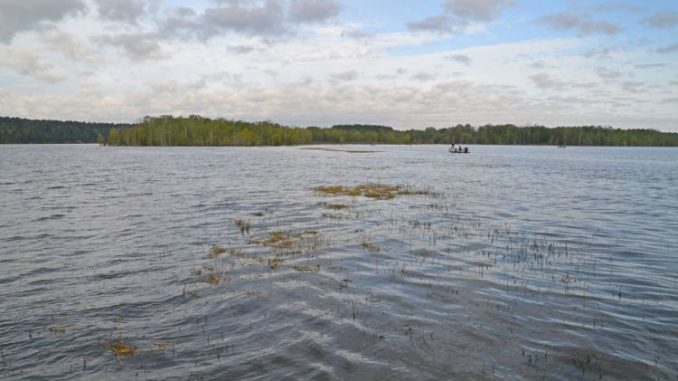
Dusty Anders said Toledo Bend Reservoir is kind of intimidating for a fisherman new to the lake because it’s so big.
“I recommend that people pick an area, like one creek arm, and learn it,” Anders said. “Pick it apart.”
He divides the big lake into three parts.
The northern end — from the San Miguel Creek arm northward — is more “old-school fishing,” more spinnerbaits and more native bass instead of Floridas.
“It has more color to the water,” Anders said. “It is the first to warm in the spring, and the (bass) spawn starts earlier. It is more stumpy than the rest of the lake and has less grass.
“It’s harder to navigate. Because of the stumps, definitely stick to the boat lanes.”
The south end, below the Negreet Creek arm has a lot more grass and less stumps.
“Bass tend to hold deeper here, because of clearer water,” Anders said. “Swim jigs are good baits for clearer waters. The south end has more boat traffic and more Florida bass.
“Some of the more-popular areas are Housen Bay and Six Mile Creek.”
The mid-lake area sits between San Miguel and Negreet Creek arms.
Anders listed the major creek arms on the Louisiana side (north to south) as San Patricio, San Miguel, La Nana, Negreet and Toro Bay (bayou). On the Texas side are Patroon, Palo Guacho, Lowes, Housen, Six Mile, Mill and Buck.
First learn the flats, the areas 10 feet deep or less, Anders coached. This includes the narrow ridges extending out from shore.
Bass relate to the flats. There will always be fish in shallow water, and they are easier to find.
Then learn the deeper parts of the creeks. Bass use these as highways for seasonal travel, Anders.
The main fishing is done where creeks are close to shallows.
Anders pointed out that new anglers can do a lot of homework off the lake using Navionics chips in their depth sounder. This substitutes for idlingrepeatedly over the area to be learned, saving hours and hours.
What is important on the water, Anders said, is learning how to recognize shad on your depth finder.
And then you should note areas holding vegetation.
“Learn the grass areas — pepper grass, hay grass, hydrilla and coontail,” Anders said. “Grass is a good thing over here. The one you like best is hydrilla. The fish like it better than anything, by far.”
Once you get down to fishing, Anders said you should go with what you know — but be flexible.
“Start with your confidence lures; you will catch fish with them,” he said. “Do what you have confidence in. Then, if the fish don’t take that, change baits.
“Don’t get tunnel vision.”
Anders admitted to not being a “bank-beater,” having evolved into spending most of his time out in the main lake.
“Some of those ridges extend 400 or 500 yards out,” he said. “You just have to find the sweet spot on them. It took me a year and a half to get the confidence to fish out in the open.
“Out there, you don’t have to contend with other people. The fish are less pressured, so they tend to hold together better. The fishing is more stable.
“The disadvantages are having to deal with wind and that it takes longer to learn how to find the fish. You need to buy and learn the best technology: I have two $3,000 Lowrance DownScan fish finders on my boat.”